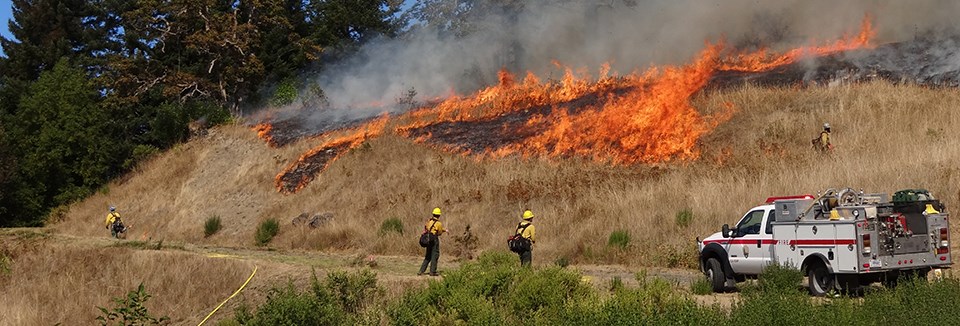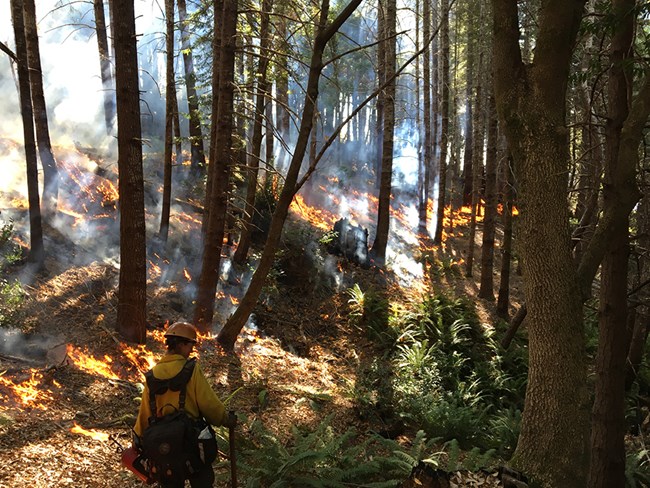Last updated: June 30, 2020
Article
Redwood National Park - Managing a Landscape with Prescribed Fire in an Era of Increasing Wildland Fire Complexity

NPS
In an era of increasing complexity in wildland fire, the planning and implementation of prescribed burns in California requires a long-term commitment to land management. Burn windows appear and disappear depending on myriad internal or external factors. Longer wildfire seasons extending into typical fall burn windows pull resources away from fuels management projects, while increasingly destructive wildfires focus more attention on prescribed fire projects.
The typical prescribed fire season at Redwood National Park (REDW) begins in late September and extends into November or December. Often, multiple years are required to find the right window where resources are available, weather is in prescription, and off-unit wildfires are not limiting opportunities for implementation on the park.
Early FY19 was a challenging time for the park to complete its fuels management program of work due to an especially destructive wildfire season in northern California, including the Carr fire and the Camp fire. Despite these factors, REDW was able to complete six prescribed fires for a total of 840 acres.

NPS
The park has had a fairly consistent and successful prescribed fire program in recent years. A long-term commitment to using prescribed fire to achieve land management objectives in the Bald Hills has led to treating 500–1500 acres annually since the early 1990s. The park has also maintained a shaded fuel break along Bald Hills Road for wildfire evacuation and defensible space.
Key to success is the interagency Service First agreement between the park and Six Rivers National Forest. The agreement with forest allows for fire resource sharing and funds transfer for fuels management projects. Through adaptive management, the park has revised burn plans to capitalize on later prescribed fire windows that are becoming more common.
The early FY19 prescribed fire projects at REDW focused on oak woodland, grassland, and coniferous forest areas for fuels reduction to lessen wildfire risk, maintain open habitats and associated biodiversity, and restore fire as an ecosystem process in fire-adapted vegetation. The 840 acres treated will sustain low fuel loads and open habitat for approximately five years, at which point the park will be committed to reapplying fire as part of its long-term land management strategy in the Bald Hills.
